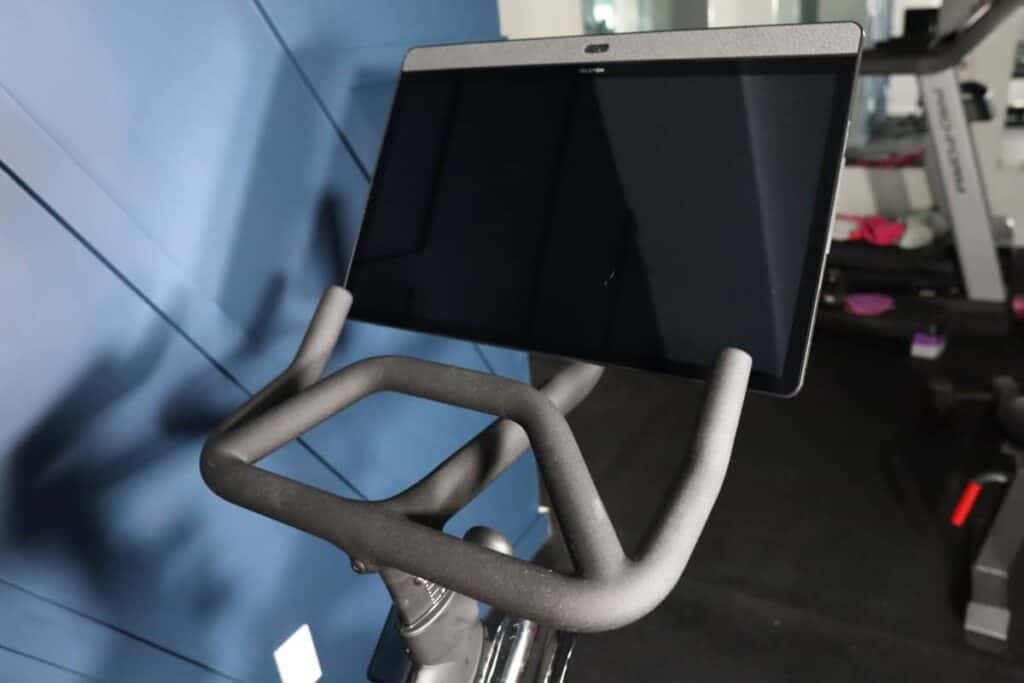Peloton bikes were unveiled back in 2014, and they quickly rose to prominence. There was a steady growth, but then in 2020, when many people had to look for at-home training methods, as the vast majority of gyms were either closed or had limited training hours, their popularity exploded. So, you may well be wondering, though, what the difference between the first and second generation is.
The differences between the generation 1 and 2 Peloton bikes are as follows, the price for the Bike Basic package is roughly $1000 cheaper than the Bike+ Basic. The Bike+ has a rotatable screen, more RAM; a better sound system; improved Wi-Fi connection; auto-adjusting resistance; and more.
There are currently two options to pick from in terms of the Peloton bikes, and these are the Peloton Bike and the later model, the Peloton Bike+ (Plus). You may well have bought yours secondhand or are just unsure as to which one it is that you actually have. So come along as we unpack the differences between them and uncover which one it is that you own.
The Primary Differences Between Peloton Generation 1 And 2

Although it would be great if both the bikes were made equally and still shared the same price tag as the Bike, unfortunately, that is not the case. There are undoubtedly noticeable differences between the two – so let us take a look.
The Price Tag On Peloton Generation 1 And 2

The Bike Basics package, which includes only the Bike and a 12-month limited warranty, comes in at $1,495 – this is without all the additional gear you can get with the more expensive packages. The Bike+ Basics package, on the other hand, is currently sitting at $2,495 for the bike and the 12-month limited warranty. That is a price difference of $1,000, which is rather substantial.
If, after reading this post and you realize that you have the Peloton Bike and would like to upgrade to the Bike+, there is some good news for you in that you can trade it in and receive a $700 rebate to purchase your new Bike+.
The Overall Quality Of Peloton Generation 1 And 2
Both of the bikes measure up for quality, so just because you are paying much less for the Peloton Bike than you would for the Bike+, you are not sacrificing quality for the lower price tag. Both of the bikes perform and are excellent in their own right. Sure, there are differences, and we are delving into those, but rest assured, you are not sitting with a “cheap” alternative if you have the Bike.
The Screen – Deciding Between Peloton Generation 1 And 2

You will be well aware that your Peloton bike has a touch screen, and this is the same for both versions; the only main difference being that the Peloton Bike has a 21.5 inch (54.6 centimeters) screen while the Bike+ is 23.8 inches (60.5 centimeters). Other noteworthy differences are the anti-smudge coating and the anti-reflective surface on the Bike+, which the Bike does not have.
Also, when it comes to functionality and features (which we shall detail briefly), the Bike+ has a screen that can be tilted up or down and can rotate in a 360° movement.
This is great if you want to take advantage of weightlifting, yoga, stretching, and other types of workouts, as you can turn the screen to face you wherever you are positioned. The Peloton Bike does not have the rotating feature and can only tilt up or down. So if you only really intend to use the bike for spinning, then this is not a problem.
There is also a separate attachment that can be purchased to allow the Peloton bike screen to swivel. Check it out here!

Peloton Generation 1 And 2: Technological Components
Both of the bikes come equipped with 16GB internal storage; however, this is where their technical similarities come to an end. The RAM in the Bike+ is 4GB, while the Bike only has 2GB of RAM. This may not appear to be much of a difference, but it makes navigating through the device and its features more seamless.
Both of the bikes boast Bluetooth capabilities, however once again, there is a discrepancy in that the original Peloton Bike has a 4.0 connection, while the Bike+ uses a 5.0 connection. However, it must be mentioned that this should not make much of a difference in the user experience of the bike. The speed is supposedly faster; however, the range aspect is redundant in this case.
Now one area where there is another noticeable difference is in the Wi-Fi technology, and this is because the Bike+ has an upgraded Wi-Fi system that allows you to connect to both 2.4 GHz and 5GHz. In layman’s terms, that means that, depending on how your Wi-Fi is set up, you should get faster speed, which means a better streaming experience with higher video quality.
Other Aspects And Features Of Peloton Generation 1 And 2
One of the big ones is the sound quality; with the Peloton Bike+, you get 2.2 channel front-facing stereo speakers, with additional 2.2 rear-racing woofers. The Bike only has a stereo speaker system that is two-channel and rear-facing.
This means that you will likely feel far more immersed by the soundscape with the Bike+. However, you could always connect Bluetooth headphones to combat this shortcoming in the Peloton Bike
and perhaps get an even better auditory experience.
If you wish to plug headphones into your Peloton, the headphone jack is far more conveniently placed on the Bike+ than the Bike. On the Bike, the headphone jack is on the rear of the screen, which is incredibly awkward. The Bike+ has it placed directly in the middle of the handlebars, making for far greater ease of use.
Charging a device, perhaps a mobile phone, is possible on both Peloton bikes; however, there is a fundamental distinction between them. The Bike comes fitted with a standard USB port, while the Bike+ offers a USB-C charging port.
If you happen to use the on-demand classes with the Peloton Bike+, there is a nifty feature that you have likely come across, which is the auto-adjusting resistance. The instructor dictates this, and the Bike+ does as it is told, whereas, with the Bike, you constantly have to change the resistance manually.
A Brief Breakdown Of The Peloton Generation 1 And 2
The original Peloton Bike may not have all that the Bike+ has; however, for the much lower price, you do still get a quality indoor bike that comes with all the same features attached to its membership (a monthly fee of $39 applies which is changing effective June 1st, 2022 to 44 dollars per month). This gives you access to all the various classes and content, and if you have the Bike, you can easily stream to a TV screen for the other workouts.
As mentioned, the membership gives you access to on-demand classes, and you also get your metrics for each class. These include resistance, cadence, power, and heart rate (if you have a heart rate monitor). There is even a competitive leaderboard, allowing you to see who is riding with you in the class.
One thing you also do not get with the Peloton Bike, but that is compatible with the Bike+, is the Apple Gym Kit integration. If you have an Apple Watch, you can pair it with the Bike+ for a more accurate heart rate monitoring system. However, if you have the Bike, you can still connect heart rate monitors via Bluetooth, or you may have one that connects via ANT+.
Conclusion
By now, you should have a fair idea as to the differences between the Peloton Bike and the Bike+. The latter certainly comes fitted with more and better features and aspects. However, the Bike is still a worthwhile investment and comes in at a much lower price. If you wish to upgrade, you can get a rebate of $700 to purchase your new Bike+.
We hope you enjoyed this read and feel informed about the differences between the two bikes. Additionally, if you were unsure as to which one you have, you ought now to be equipped with the knowledge to know precisely which model you own.






